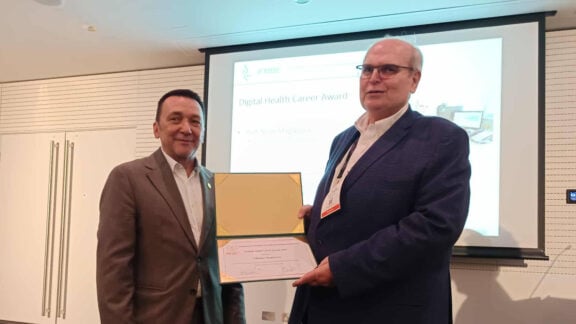The Africa Centres for Disease Control and Prevention (Africa CDC) declared the ongoing Monkeypox (Mpox) outbreak in the Democratic Republic of Congo (DRC) and surrounding areas a ‘public health emergency of continental security’ on August 13, 2024, and subsequently, the World Health Organization (WHO) announced on August 14, 2024 that it is a ‘public health emergency of international concern (PHEIC)’ [1].
This occurred 15 months after the WHO ended the previous Mpox emergency on May 11, 2023, which was thought to have ended prematurely [2]. The cases originated in the DRC, with 30 % of the cases being sex workers [3], and have now spread to the four bordering nations of Burundi, Rwanda, Kenya, and Uganda [4].
Mpox is a viral illness caused by the monkeypox virus of the Orthopox genus and causes symptoms including skin lesions, lymphadenopathy, musculoskeletal pain, ocular manifestations, and malaise [5–9]. The infection spreads from contact between infected humans or animals or contact with contaminated materials [10]. On July 23, 2022, the WHO declared an outbreak of Mpox involving several countries simultaneously as a PHEIC [11]. From January 2022 to August 2024, approximately 102,997 cases and 223 deaths were reported across all six WHO Regions. There was also spillover in the United States of America, with 60 deaths reported [12]. Phylogenetic studies indicate three distinct clades of the Mpox virus: Clade 1, associated with the Congo Basin; Clade 2, connected to West Africa; and a proposed novel Clade 3, identified following the 2022 European outbreak [13]. As of 18 August 2024, 12 countries have reported 3,562 confirmed cases, including 26 deaths. The three countries with the majority of cases in 2024 are the Democratic Republic of the Congo (n = 3,235), Burundi (n = 153), and the Central African Republic (n = 45).
The 2022 outbreak was caused by the ‘clade 2 strain,’ which is rarely fatal; the outbreak in DRC began with the endemic clade 1 strain; however, the current strain circulating belongs to ‘clade 1b’ [14], which was classically more deadly, with case fatality rates being as high as 10%. However, those figures were described before the recent outbreaks (2022–2024), with no sexual transmission and maybe biases (only detecting severe cases). Some studies describe a 1.4% or even lower case fatality rate [14,15].
Clade 1b spreads more quickly through routine close contact, particularly among children under 15. Since the start of 2024, there have been over 14,000 cases, with 511 deaths in seven months, more significant than all of 2023 [4]. The Africa CDC reported that Mpox cases in Africa have increased by 79% from 2022 to 2023 and 160% from 2023 to 2024. The Africa CDC is all set to coordinate cross-border responses and a case notification program. It will also arrange to utilise national and international resources and accelerate vaccine development.
The Africa CDC had been granted $10.4 million in emergency funding from the 55 African Union member states to accelerate its Mpox response and prevent the outbreak-initiating pandemic.
The African nations that have reported Mpox cases include Benin, Cameroon, the Democratic Republic of the Congo, the Republic of the Congo, Gabon, Ghana, Liberia, Nigeria, Sierra Leone, and South Sudan, with the DRC alone having 90% of total cases. In 2024, South Africa, the Central African Republic, and Cote d’Ivoire have reported re-emerging cases, whilst Burundi, Kenya, Rwanda, and Uganda are reporting it for the first time (Fig. 1). Declaring this outbreak as a PHEIC requires technical and strategic discussion between the African CDC, the African Union, and affected states.
Vaccination against monkeypox can limit infection and severity. However, the shortage of vaccines in Africa is a significant challenge in controlling its spread. Africa CDC estimates that about 200,000 doses are currently available compared to a requirement of at least 10 million doses, based on estimates from countries that have prepared vaccination plans. The Africa CDC is committed to securing more vaccines through direct action and working with international partners.
The current declaration calls on countries worldwide to collaborate, allocate resources for enhanced surveillance, provide treatment for those infected, and work to halt the outbreak. The WHO has released a document on Strategic Preparedness, Readiness, and Response Plan for controlling Mpox outbreaks. The critical points listed in the document include [16].
- The state must form an incident management team and ensure coordination and networking between all stakeholders for managing outbreaks.
- Risk assessment to be carried out for vulnerable populations [17].
- Establish a multi-selector task force to work in high-risk areas in case of need.
Contents lists available at ScienceDirect Travel Medicine and Infectious Disease journal homepage.







